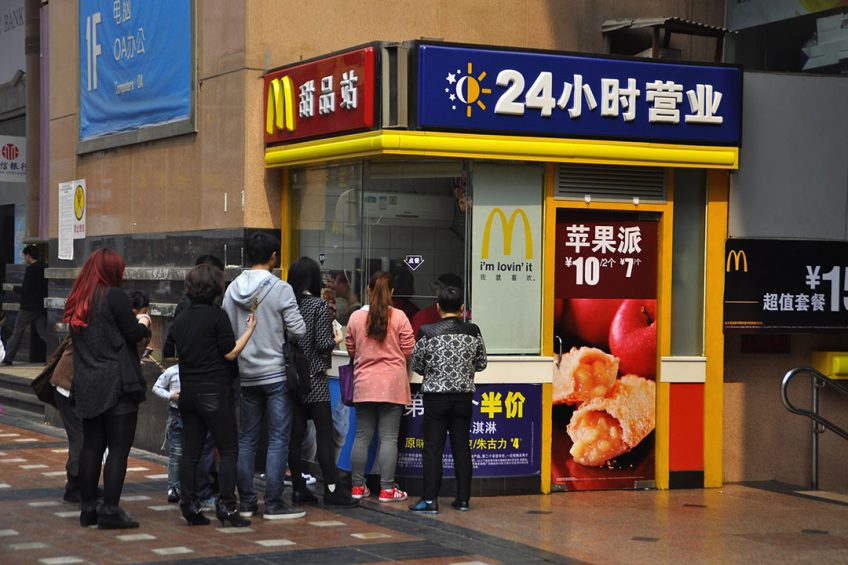China: Changing consumer trends influencing the pig sector

This is the third article in the series of articles about China. In this final report, let’s take a look at Chinese consumers and the trends affecting the pig industry.
It’s obvious why this is an important discussion since commercial activity can only be sustained if driven by consumer wants and desires in a market economy. The Chinese economy isn’t any different to western economies in this regard – although we can expect that Chinese consumers will have different habits and purchasing behaviour (and that there may be some state interference in market signals).
But, ultimately, the consumer is sovereign. So, any research and market info that is available about how Chinese consumers are behaving and the trends in consumption and consumer demand in China will be of great value to pig and pork investors and exporters. This article reviews two recent and valuable sources of consumer market information in China – from McKinsey, the management consultants, and from the USDA’s China staff as part of the Foreign Agricultural Service’s GAIN reports.
USDA view of China’s consumer market
The USDA provides an overview of the Chinese consumer market. In 2016, the total retail sales of consumer goods reached € 7.3 trillion in China and food consumption by China’s annual urban households rose 30% by value. According to the USDA, “Large retailers are gaining market share as they develop better supply chains, wider distribution channels, and more effective quality control. At the same time, new retail business models, such as smaller convenience and speciality e-commerce stores, are opening new avenues for products. China’s food retail landscape is in transition. While quality and premium-priced food products are continuing to be successful in first-tier cities, retailers are now focusing on supplying second-and third-tier cities. China is home to over 100 cities with a population of at least one million each.”

McKinsey’s most recent China Consumer Report, Double clicking on the Chinese consumer (November 2017), does not have food or meat consumption as its primary focus but nevertheless it is a rich source of information on how the Chinese consumers are changing. This series of annual and biannual reports is based upon large sample surveys (10,000 respondents aged 18 to 65 across 44 cities and seven rural villages and towns) and goes back over twelve years. So, what does McKinsey say about how the Chinese consumer is changing?
Figure 1 – Trading up (and down) in key FMCG1 categories: China, US, Germany (% of survey respondents).
The Chinese consumer no longer exists
The first, startling, claim that McKinsey makes is that, “The ‘Chinese consumer’ no longer exists.” What the authors of the report mean by this is that big picture trends aren’t enough in China. Consumer behaviour is now much more complex and nuanced.
The McKinsey report argues that there isn’t a one-size-fits-all definition of the Chinese consumer. And that discerning shoppers are younger, focused on health, and more brand savvy than ever. The action point for commercial companies (global and local) is that their product messages and attributes need to recognise this growing appetite for sophistication and added value in China. In short, they need to see Chinese consumers as much more like the complex, differentiated consumers that populate western economies.
Four trends of McKinsey
The four key trends that McKinsey identifies are worth listing:
1. Consumer confidence has reached a ten-year high, but risks are apparent – from volatile housing prices, slowing income growth, regional disparities and inflation;
2. Consumers are more health-conscious than ever before;
3. Chinese consumers are taking a more nuanced view of global versus local brands;
4. The ‘post-90s’ generation is emerging as the next engine of consumption in China. Aged 17-27, these consumers are digital natives – born with the internet – and they have spending power.
Points 2, 3 and 4 have direct implications for sellers of pork and pigmeat into China. McKinsey notes that Chinese care more about what they eat now and how food and exercise can affect their health. It’s easy to see many examples of this in the behaviour of the Chinese – jogging and exercising with wrist bands and activity trackers is now commonplace.
Figure 2 – Chinese consumers’ attitudes toward healthy living (% of respondents).

Healthy China 2030 plan
In 2016 Beijing announced the ‘Healthy China 2030 plan’, which promised to promote policies that encouraged healthier diets, exercise, and access to healthcare services. In some shopping malls you can see that fast-food chains are being replaced by restaurants that emphasise organic food and healthy dining.
As for brands, McKinsey report that Chinese consumers are becoming more discerning and more loyal to some brands – as their experience grows. This is partly due to the growth of social media – which offers feedback and experience of brands quickly and cheaply. This links with the digital phenomenon and e-commerce experience of Chinese consumers. McKinsey estimates that the value of China’s e-commerce transactions is larger than in France, Germany, Japan, the UK, and the USA combined. Penetration of mobile payments among China’s Internet users grew from circa 25% in 2013 to 68% in 2016. The message is clear from the points made above – the sweet spot for pork in China is a pigmeat product that offers health benefits, is linked with a trusted brand, and is offered via innovative digital retail systems.
Investments in retail channels
The work by McKinsey is based on consumer surveys and can be cross-checked against observed data at the retail level. What evidence is there from actual investments in retail channels and infrastructure on how Chinese consumers are behaving? The USDA’s GAIN report on China provides answers to this question.
Notably, the USDA is very clear about how e-commerce has changed how consumer goods are marketed and purchased in the last ten years in China. China is now a world leader in mobile payment platforms according to the USDA. Cash is no longer king. And new retail models, such as 24-hour unattended convenience stores are being tested.
Most significantly, the USDA makes the same point as McKinsey in that China should now be seen as a collection of niche markets. The differentiators between markets are: geography, culture, cuisine, demographics and local commercial trends. This makes the job of aspiring pork and pigmeat product exporters harder and easier at the same time. Harder because the market is more complex and easier because there should be a niche of significant size somewhere in China that suits an exporter’s offer(s) – and the opening up of second and third tier cities via new retail investments/systems is happening.
Top 10 retailers in China 1. China Resources Vanguard Source: China Chain Store & Franchise Association May 2017. |
A market that cannot be ignored
How does all this information get summarised? Well, the obvious point is that China’s consumer market is clearly very important to any exporter in the West that aspires to increase sales. It’s a market that surely can’t be ignored.
But it’s also obvious that the market is changing. The danger for pork and pigmeat exporters is that their efforts to access the Chinese market may focus on selling the traditional cuts of pork and fifth quarter products via commodity-oriented distribution channels. That approach is necessary now but the market information reported here suggests that it will not be a winning strategy in the future.
China at a glance China is the world’s fifth largest country with a surface of about 9,596,9600 km2. Almost 55% of the country is in use as agricultural land. In addition, the country consists of mountains, high plateaus, deserts in west; plains, deltas, and hills in east. In July 2017, total population of China amounted to 1.38 billion people. It is the largest economy in the world on Purchasing Power Parity (PPP) measure $23.12 trillion; income per capita in 2017 was US$16,600. Not surprisingly, with approximately half of the world’s pigs within its borders, pork is the most popular meat in China, accounting for three-fourths of the country’s meat consumption. China is the world’s fifth largest country with a surface of about 9,596,9600 km2. Almost 55% of the country is in use as agricultural land. In addition, the country consists of mountains, high plateaus, deserts in west; plains, deltas, and hills in east. In July 2017, total population of China amounted to 1.38 billion people. It is the largest economy in the world on Purchasing Power Parity (PPP) measure $23.12 trillion; income per capita in 2017 was US$16,600. Not surprisingly, with approximately half of the world’s pigs within its borders, pork is the most popular meat in China, accounting for three-fourths of the country’s meat consumption. |













